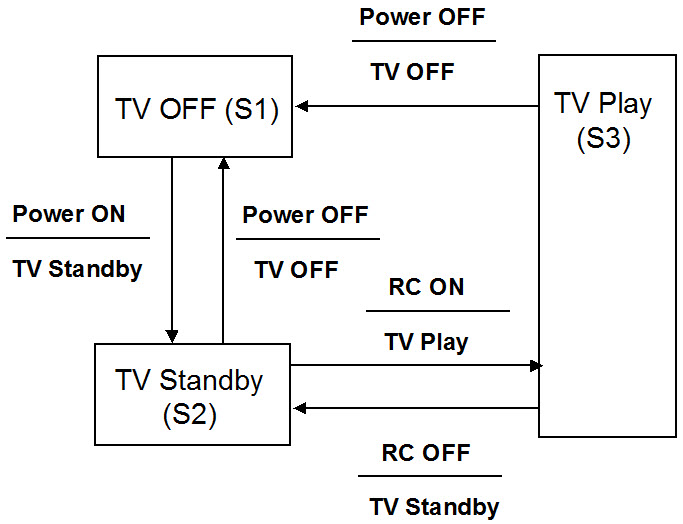ISTQB Certification Exam-Sample Papers Q. 891 to 900
(Quickly Review Your Skills before appearing for ISTQB Certification Exam)
Set of 10 Questions � Q. 891 to Q. 820
Correct Answers to Earlier Questions – Q. 881 to Q 890 are at the end of this page:
Q. 891: Which of the following characteristics of good testing apply to any software development life cycle model?
A. Acceptance testing is always the final test level to be applied.
B. All test levels are planned and completed for each developed feature.
C. Testers are involved as soon as the first piece of code can be executed.
D. For every development activity there is a corresponding testing activity.
<<<<<< =================== >>>>>>
Q. 892: For which of the following would maintenance testing be used?
A. Correction of defects during the development phase.
B. Planned enhancements to an existing operational system.
C. Complaints about system quality during user acceptance testing.
D. Integrating functions during the development of a new system.
<<<<<< =================== >>>>>>
Q. 893: Which of the following statements are TRUE?
A. Regression testing and acceptance testing are the same.
B. Regression tests show if all defects have been resolved.
C. Regression tests are typically well-suited for test automation.
D. Regression tests are performed to find out if code changes have introduced or uncovered defects.
E. Regression tests should be performed in integration testing.
A. A, C and D and E are true; B is false.
B. A, C and E are true; B and D are false.
C. C and D are true; A, B and E are false.
D. B and E are true; A, C and D are false.
<<<<<< =================== >>>>>>
Q. 894: Which of the following comparisons of component testing and system testing are TRUE?
A. Component testing verifies the functioning of software modules, program objects, and classes that are separately testable, whereas system testing verifies interfaces between components and interactions with different parts of the system.
B. Test cases for component testing are usually derived from component specifications, design specifications, or data models, whereas test cases for system testing are usually derived from requirement specifications, functional specifications or use cases.
C. Component testing focuses on functional characteristics, whereas system testing focuses on functional and non-functional characteristics.
D. Component testing is the responsibility of the technical testers, whereas system testing typically is the responsibility of the users of the system.
<<<<<< =================== >>>>>>
Q. 895: Which of the following are the main phases of a formal review?
A. Initiation, status, preparation, review meeting, rework, follow up.
B. Planning, preparation, review meeting, rework, closure, follow up.
C. Planning, kick off, individual preparation, review meeting, rework, follow up.
D. Preparation, review meeting, rework, closure, follow up, root cause analysis.
<<<<<< =================== >>>>>>
Q. 896: Which TWO of the review types below are the BEST fitted (most adequate) options to choose for reviewing safety critical components in a software project?
Select 2 options.
A. Informal review.
B. Management review.
C. Inspection.
D. Walkthrough.
E. Technical Review.
<<<<<< =================== >>>>>>
Q. 897: One of the test goals for the project is to have 100% decision coverage. The following three tests have been executed for the control flow graph shown below.
Test A covers path: A, B, D, E, G.
Test B covers path: A, B, D, E, F, G.
Test C covers path: A, C, F, C, F, C, F, G.

Which of the following statements related to the decision coverage goal is correct?
A. Decision D has not been tested completely.
B. 100% decision coverage has been achieved.
C. Decision E has not been tested completely.
D. Decision F has not been tested completely.
<<<<<< =================== >>>>>>
Q. 898: A defect was found during testing. When the network got disconnected while receiving data from a server, the system crashed. The defect was fixed by correcting the code that checked the network availability during data transfer.
The existing test cases covered 100% of all statements of the corresponding module. To verify the fix and ensure more extensive coverage, some new tests were designed and added to the test suite.
What types of testing are mentioned above?
A. Functional testing.
B. Structural testing.
C. Re-testing.
D. Performance testing.
A. A, B and D.
B. A and C.
C. A, B and C.
D. A, C and D.
<<<<<< =================== >>>>>>
Q. 899: Which of the following statements about the given state table is TRUE?


A. The state table can be used to derive both valid and invalid transitions.
B. The state table represents all possible single transitions.
C. The state table represents only some of all possible single transitions.
D. The state table represents sequential pairs of transitions.
<<<<<< =================== >>>>>>
Q. 900: Which TWO of the following solutions below lists techniques that can all be categorized as Black Box design techniques?
Select 2 options.
A. Equivalence Partitioning, decision tables, state transition, and boundary value.
B. Equivalence Partitioning, decision tables, use case.
C. Equivalence Partitioning, decision tables, checklist based, statement coverage, use case.
D. Equivalence Partitioning, cause-effect graph, checklist based, decision coverage, use case.
E. Equivalence Partitioning, cause-effect graph, checklist based, decision coverage and boundary value.
Correct Answer of All above Questions
Access the Full Database of all Questions
Correct Answers to the Earlier Questions – Q. 881 to Q 890 are as under:
| Question No. | Correct Answer |
| Q. 881 | B |
| Q. 882 | C |
| Q. 883 | B |
| Q. 884 | B |
| Q. 885 | A |
| Q. 886 | C |
| Q. 887 | C |
| Q. 888 | B |
| Q. 889 | D |
| Q. 890 | A |

An expert on R&D, Online Training and Publishing. He is M.Tech. (Honours) and is a part of the STG team since inception.
